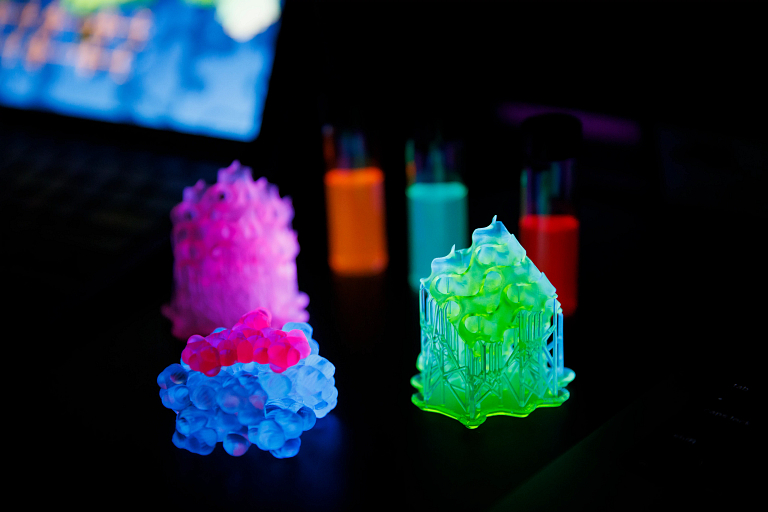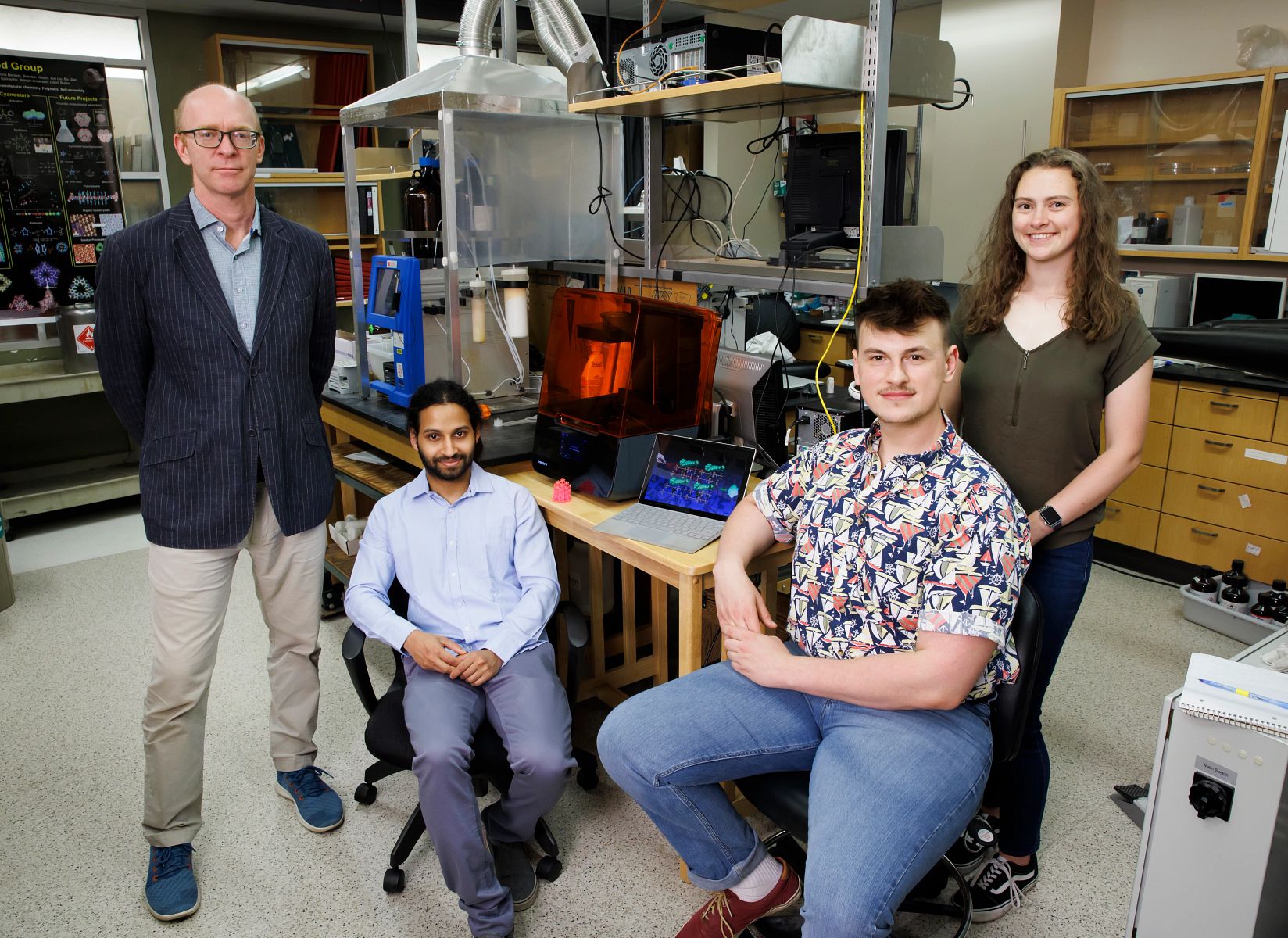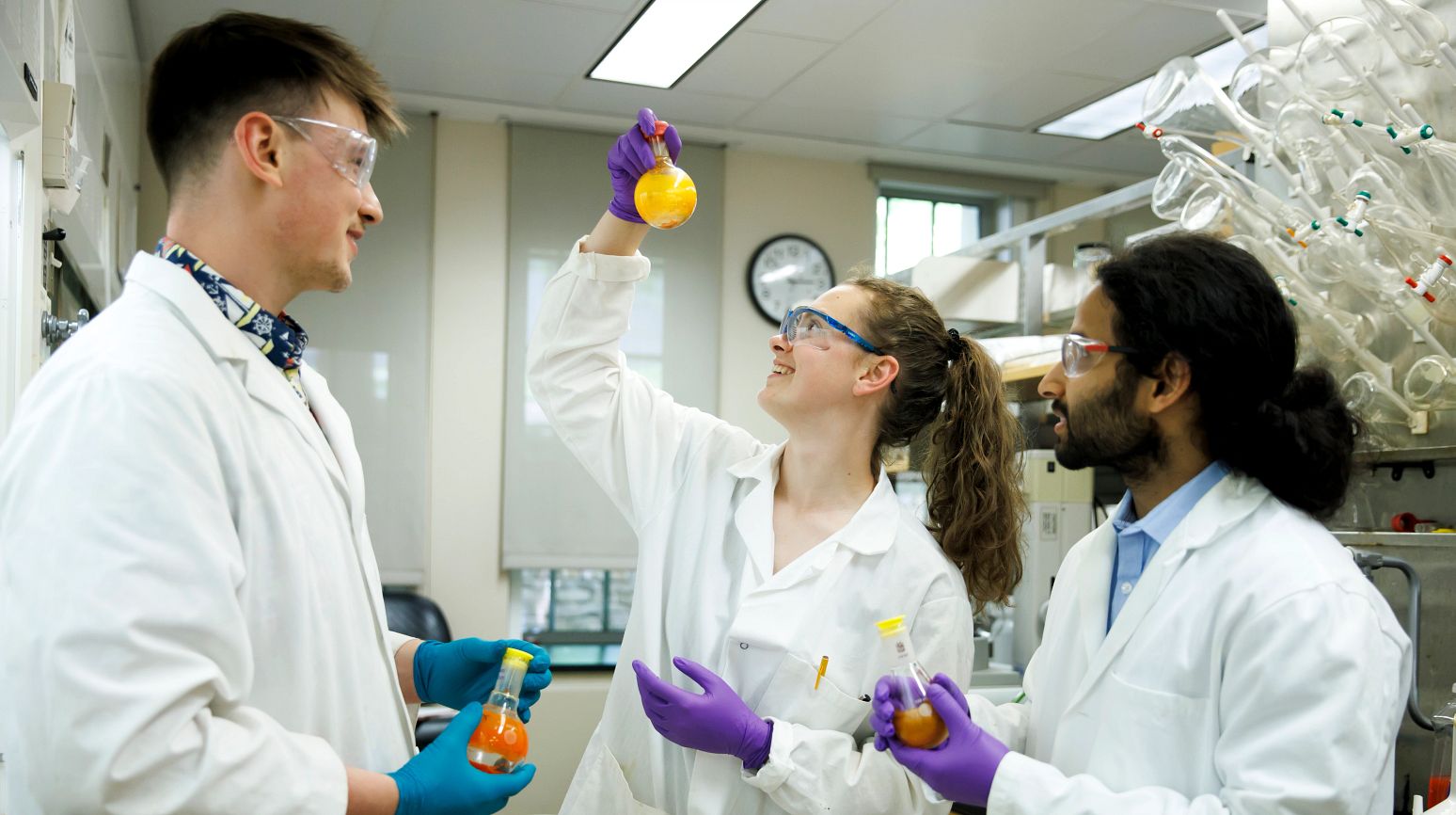A federal grant program created to spur the United States' global competitiveness by speeding the manufacture of high-tech materials has awarded $1.8 million to Indiana University researchers who discovered the world's brightest-known fluorescent solid materials.

Amar Flood, Krishnan Raghavachari and Sudhakar Pamidighantam of IU Bloomington will receive funds from the National Science Foundation's Designing Materials to Revolutionize and Engineer Our Future program, or DMREF, to advance research on SMILES.
Also known as small-molecule, ionic isolation lattices, SMILES are an innovative new material invented at IU with potential to advance technologies such as solar panels, solid state lasers, medical imaging devices and 3D displays. SMILES have an unprecedented brightness that does not dim or change color during the production process -- a common problem in the manufacture of brightly colored solids.
"SMILES are a foundational material -- a totally new material," Flood said. "There's never been anything quite like them, so this grant will help us understand more about their properties, as well as how they might be used to improve existing technologies or advance new ones."
The work conducted under the award will combine experimental chemistry, computational chemistry and data science research led by Flood, Raghavachari and Pamidighantam, respectively. The findings will also immediately benefit Hoosier industry through Halophore, a downtown Indianapolis-based company established in 2020 to explore the commercial applications of SMILES technology. Halophore has active collaborations with partners in academia and industry.

Chris Benson, who earned a Ph.D. as a researcher in Flood's lab at IU, is the CEO of Halophore.
"SMILES are truly unique -- not just in terms of the science but also because these materials are a 'platform' technology," Benson said. "Most materials discoveries have narrow commercial potential. In contrast, SMILES possess a remarkable combination of unprecedented features and versatility -- and there's a lot more territory to explore. I think the most exciting part of this grant is that we're going to learn a lot in a very short time. These discoveries will augment the technology, as well as break open new opportunities we hadn't even considered."
SMILES' powerful brightness is the result of a "molecular glue" that causes dye molecules to assemble into tightly packed solids with a checkerboard lattice. The primary ingredient in this "glue" are called "cyanostars," a special macrocyclic molecule first synthesized in Flood's lab in 2013.
The commercial and scientific potential of SMILES stems from their ability to transform brightly colored liquid materials into a stable crystalline solid. In the case of solar panels, for example, the capture of energy from infrared light uses specifically colored components that rely on a process called upconversion, which currently only works well in a liquid state. Similarly, 3D-display technology -- a nascent technology that depends on flat-panel screens with pixels that rotate light up to 360 degrees -- also uses dyes that only work well in liquid form. The potential to produce these technologies without liquid components offers significant advantages.

"Any time you're using liquid in a system, you're increasing the chances of degradation or mechanical failure, and decreasing energy efficiencies," Flood said. "In terms of the usability, going from a liquid state to a solid state significantly increases a material's durability, longevity and efficiency."
Under the grant, IU researchers' goals include the establishment of an open-source database and crystal engineering rules for assembling dyes with different shapes, charges and other chemical properties. These efforts will advance the development of optical materials that could benefit from SMILES.
Flood said this collaborative and data-driven approach to materials design represents an improvement over past methods of creating new or improved materials in chemistry, which frequently remain dependent upon a costly and time-consuming process of trial-and-error. The use of data science to speed material design aligns with the DMREF program's goal of supporting the Materials Genome Initiative for Global Competitiveness, which aims to "deploy advanced materials at least twice as fast as possible today, at a fraction of the cost."
Flood is the James F. Jackson Professor of Chemistry in the IU Bloomington College of Arts and Sciences' Department of Chemistry. Raghavachari is an IU Distinguished Professor and Pamidighantam is an adjunct professor in the department. Pamidighantam is also senior scientist in the IU Cyberinfrastructure Integration Research Center under the Pervasive Technology Institute. Bo Laursen of the University of Copenhagen, a collaborator on the grant, is a co-creator of SMILES.
The establishment of Halophore and the patent of SMILES were facilitated by the IU Innovation and Commercialization Office, which helps identify, protect and commercialize technology developed by IU researchers.






